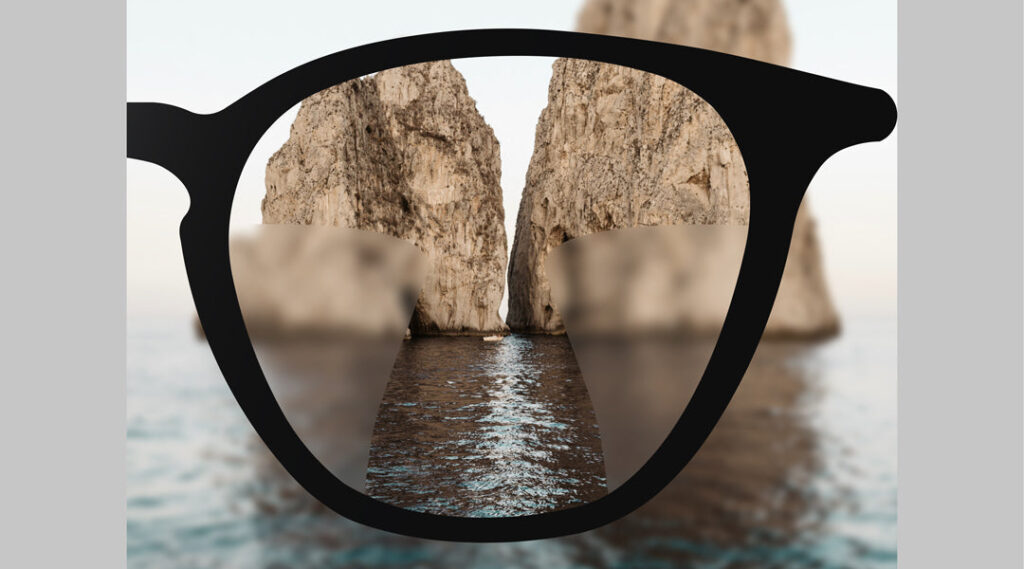HOW DO BIFOCALS WORK?
Depending on how your eyesight changes as you age, you may require more than one prescription for your glasses. If you are among the millions of Americans who regularly wear glasses to correct a refractive error, you may require multiple prescriptions.
In bifocal lenses, two lenses are separated into two parts, providing different prescriptions for different distances. They are useful for people who have difficulty focusing on nearby objects as well as those who have difficulty seeing objects at a distance.
IN WHICH WAY DO BIFOCALS DIFFER FROM TRADITIONAL LENSES?
There are many types of eyeglasses available on the market, but most of them offer only one prescription. This type of eyeglass is excellent for those who have either a nearsightedness or a farsightedness problem and only require one prescription.
Bifocal glasses, as their name suggests, have two different lens powers that allow you to perceive objects at different distances. Typically, the upper part corrects your distance vision, whereas the lower part corrects your near vision. In addition to reading on a computer, this feature is invaluable to those who wish to take notes at a distance while still being able to see distant objects easily.
DO I NEED BIFOCALS?
Most people who are required to correct their vision are likely to have multiple pairs of glasses. That is, one set of glasses for close-up activities such as reading, and another set of glasses for distance vision so that the blurriness can be reduced during driving or watching sports activities.
When opting for bifocal glasses, you may find that they resolve both problems, in particular if you are accustomed to wearing them throughout the day. Typically, people use the top part most of the time, switching to the bottom section when they want to view their phone or read a book.
It is the condition of presbyopia that necessitates the use of bifocals as we age.
Age-related vision loss
The process of presbyopia occurs as we age because the natural lens in our eye becomes less flexible. This allows us to have difficulty focusing on close-up objects. This process usually begins at about 40 years of age and continues throughout our lifetime.
As we age, we lose our ability to focus on close-up objects, such as reading or using a smartphone. Presbyopia can also cause the following symptoms.
-
Strain on the eyes
-
Migraines
-
Not being able to see reading materials when they are stored away
During an eye exam, you can determine if you have presbyopia. Often, people with presbyopia have a second refractive error, such as nearsightedness, which is why bifocals have become so popular. In your new pair of glasses, you may want to add a prescription for near vision to the bottom. You can continue to use your old prescription on top.
Presbyopia affects our vision in a number of ways. It’s a good idea to replace your glasses every year, either to keep up with a changing prescription or to maintain a contemporary style.
The types of bifunctionals
The best pair of Bifocals for you depends on the vision needs you have and your sense of style. There are several types of Bifocals available.
Bifocals that progress
We use the latest technology in progressive lenses at Low Cost Glasses to provide you with seamless vision at all distances.
The progressive type of bifocal is characterized by the absence of a visible line across the lens and gradually alters the prescription from the top to the bottom of the lens. In this manner, users can adjust the location of the lens to ensure the best clarity for specific tasks by moving their eyes up and down the lens.
Bifocals in the traditional manner
Oftentimes, people associate bifocals with a visible line separating the top from the bottom of the lens, but these segments do not always exist in the same shape. The near segments of bifocals may be half-moons, circles, narrow rectangles, or the entire bottom portion of the lens.
In some cases, this line can be distracting, but it can also be useful in allowing one to identify the necessary portion of the lens quickly.
The trifocal lens
It is possible to add additional segments to these multifocal lenses, which are called trifocals. These lenses have three areas of focus, which enable individuals with presbyopia to see clearly at all distances.
MODERN FRAMES FOR ALL LENSES
If you have difficulty seeing both close up and far away, bifocal glasses can be a lifesaver.
















